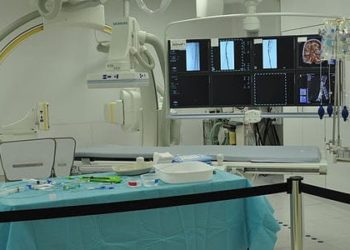Revascularization of arterial disease often futile in nursing home residents
1. Amongst nursing home residents with lower extremity arterial disease who underwent revascularization, most patients either died or were non-ambulatory by one year. There was also, on average, a clinically significant functional decline as well.
2. Additionally, one-third of patients who were ambulatory going into the procedure became non-ambulatory one year afterward. Only one-quarter of the patients who were non-ambulatory prior to the procedure gained ambulatory status one year later.
Evidence Rating Level: 2 (Good)
Study Rundown: Peripheral arterial disease is a major cause of functional decline in the elderly, and can threaten mobility entirely with limb-threatening ischemic. Revascularization procedures are often performed to preserve functional status. However, for patients whose functional status is poor for reasons other than their lower extremity peripheral arterial disease (PAD), such as those who reside in nursing homes, revascularization may offer variable benefits with significant risk present. This study, which examined resident home patients who underwent revascularization for their lower extremity PAD, sought to determine the outcome in their functional status afterwards. The results showed that within one year after revascularization, most patients had either died or were non-ambulatory by one year, and on average, there was a clinically significant functional decline as well. Additionally, one-third of patients who were ambulatory going into the procedure became non-ambulatory one year afterward. Only one-quarter of the patients who were non-ambulatory prior to the procedure gained ambulatory status one year later.
The strength of the study was including a large number of nursing home residents, which makes the study generalizable to that particular patient population. Weakness of the study included significant variability in the patients who did undergo revascularization, and lack of details about severity of disease or indications for surgery. Furthermore, there was no evaluation of the set of residents with the disease who did not undergo revascularization, which would have provided better insight into the clinical outcomes from revascularization.
Click to read the study, published today in JAMA Internal Medicine
Click to read an invited commentary in JAMA Internal Medicine
In-Depth [retrospective cohort]: Investigators for this study used Medicare Inpatient Files to identify long term nursing home residents who underwent revascularization procedures for their lower extremity peripheral arterial disease. The primary outcomes assessed were survival, functional status (based on activities of daily living, ADLs), and ambulatory status. For the analysis, 10,784 nursing home residents who underwent revascularization from 2005 – 2008 were identified. Amongst the surgeries, 67% were elective, and 55% were done with an endovascular approach.
Before the procedure, 75% of the patients were not ambulatory. One year mortality after the procedure was 43-51% amongst previously ambulatory residents, and 53% amongst non-ambulatory patients. Most residents (82%) were either dead or non-ambulatory one year after the procedure. The strongest association between non-ambulatory status or death after the procedure was the pre-operative ambulatory status (HR 1.88; 95% CI, 1.78-1.99). Amongst the patients who were alive one year after the surgery, 34% of those who were ambulatory before the surgery became non-ambulatory, and only 24% of those who were baseline non-ambulatory became ambulatory. Lastly, in the functional status measurement (via ADLs assessment), the MDS-ADL impairment score for the cohort increased to 16.7 points from a baseline of 14.5 points, which was a clinically important decline in functional status.
Image: PD
©2015 2 Minute Medicine, Inc. All rights reserved. No works may be reproduced without expressed written consent from 2 Minute Medicine, Inc. Inquire about licensing here. No article should be construed as medical advice and is not intended as such by the authors or by 2 Minute Medicine, Inc.

![Novel biodegradable sirolimus-eluting stents non-inferior to durable everolimus-eluting stents [BIOSCIENCE trial]](https://www.2minutemedicine.com/wp-content/uploads/2014/09/Taxus_stent_FDA-e1607803635904-350x250.jpg)







